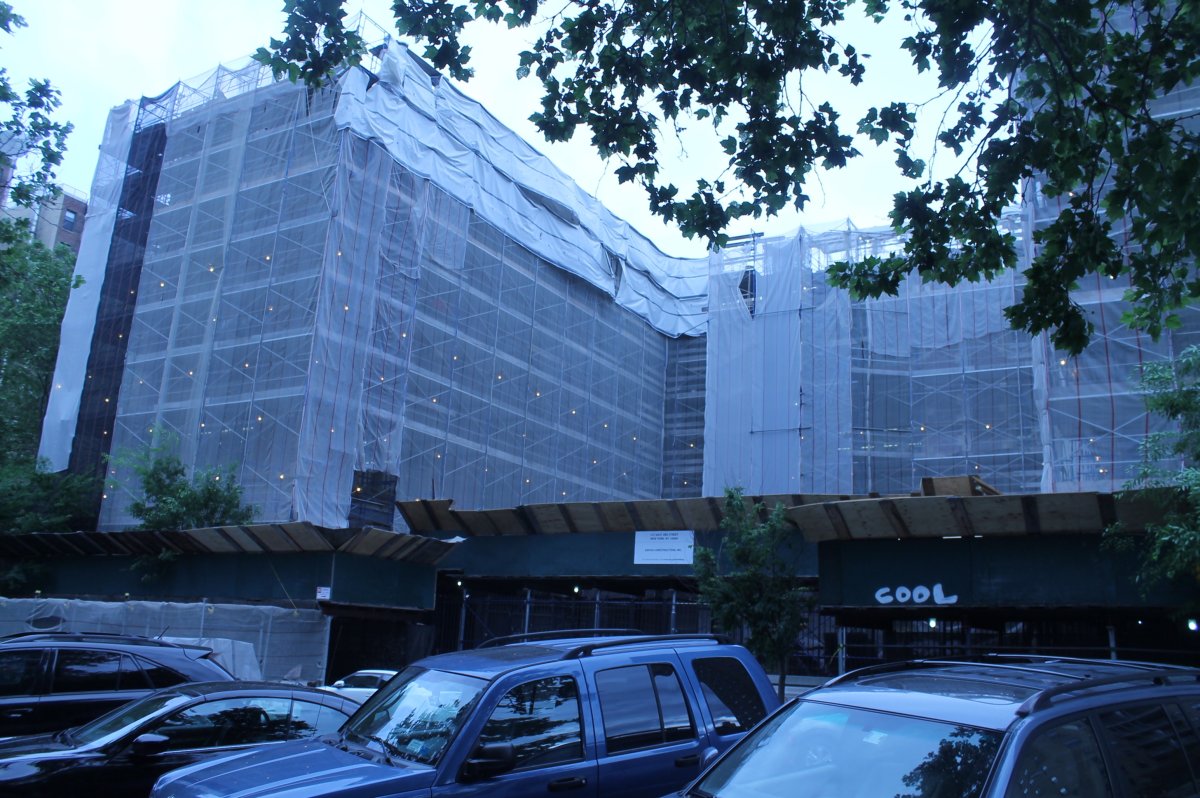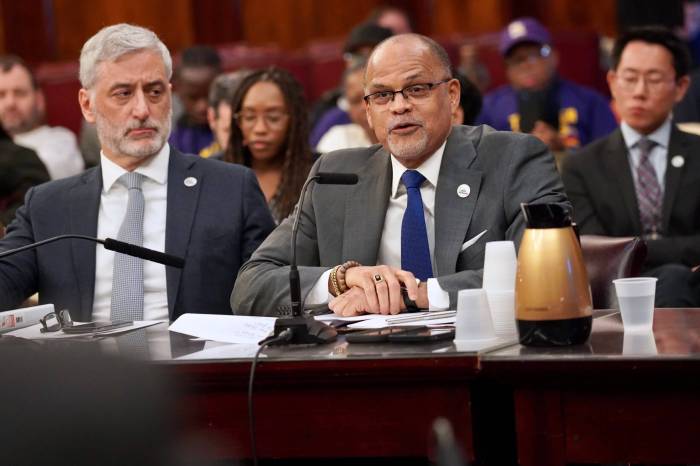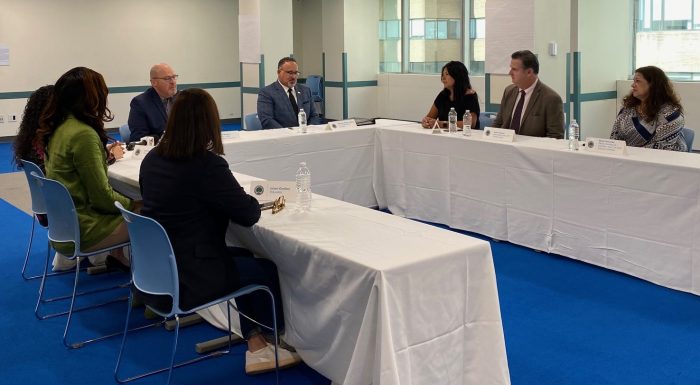
BY MICHAEL OSSORGUINE | Updated Mon., June 13: The School Construction Authority has been renovating The Neighborhood School, P.S. 363, since 2013, and parents and staff are furious that the drawn-out work has taken so long.
During the school year, the work has been done at night, with the building all lit up with construction lights, making it resemble a giant, glowing U.F.O. plopped down in the East Village.
With the project almost a year past its scheduled completion date, and numerous problems with funding and damages allegedly caused by the work, the school, at 121 E. Third St., is pushing the S.C.A. to finally wrap things up.
Multiple construction goals were supposed to have been completed by October 2015. After that date was missed, a new deadline of this April was set. The S.C.A. is now promising to finish the work by July.
“We’ve got scaffolding all around the school,” Elinor Tatum, a frustrated school parent, told The Villager. “Our kids can’t see the daylight through it. It’s kind of like they’re in a shroud all the time. We really would like to see that gone.”
The original plan called for work on the exterior masonry, parapets and roofs of The Neighborhood School and STAR Academy, P.S. 63.
According to school leaders, the S.C.A.’s work has created safety hazards and damaged the building, including gaps in the safety guards on upper floors and ceilings that leak rainwater into classrooms.
The Neighborhood School is demanding that, in addition to the job being finished, all damages to the building are repaired. The school’s Wellness Committee is circulating a petition among parents to address the deteriorated conditions.
The petition cites a rat infestation at the construction site, hypodermic needles left on the scaffolding, and violations of the S.C.A.’s claim that 19 to 25 workers would be “on the job daily” to finish work on the facilities.
The project, whose delays border on the surreal can be called “Kafkaesque.” According to the petition, the construction’s snail-like pace is due to problems with Kafka Construction Inc., which was enlisted by the S.C.A. to execute the plan.
Tatum said that a recent meeting with the S.C.A. and The Neighborhood School’s leadership persuaded the S.C.A. to put its foot down. If Kafka Construction does not get its act together by this weekend, it reportedly will be replaced.
A Department of Education spokesperson said the city is taking the situation seriously.
“We take these complaints very seriously,” she said, “and are working closely with the contractor, Community Board 3 and across city agencies, including the N.Y.P.D., the Department of Homeless Services and the Parks Department, to ensure they are addressed. We will continue to engage the community throughout the process.”
The Neighborhood School has educated children from pre-kindergarten to 5th grade since 1991.
The ongoing work has sometimes prevented afterschool programs from happening, and has caused the schoolyard to be closed, forcing children’s outdoor time to take place outside the school’s grounds, such as at First Park.
Since much of the work on the building involves abatement of asbestos-containing materials, the children’s respiratory health is also at stake, parents say.
A FAQ page on the project by the Health and Safety Committee in 2013 detailed the safety precautions of the abatement, which uses safe, chemical methods to remove asbestos, and requires regular air quality checks to test for asbestos fibers.
In addition, according to Tatum, another problem is that unless the S.C.A. finishes the work by a set time, funding for specific construction projects will be “moved around,” which raises concerns over whether the project will ever be completed, let alone finished in time.

















